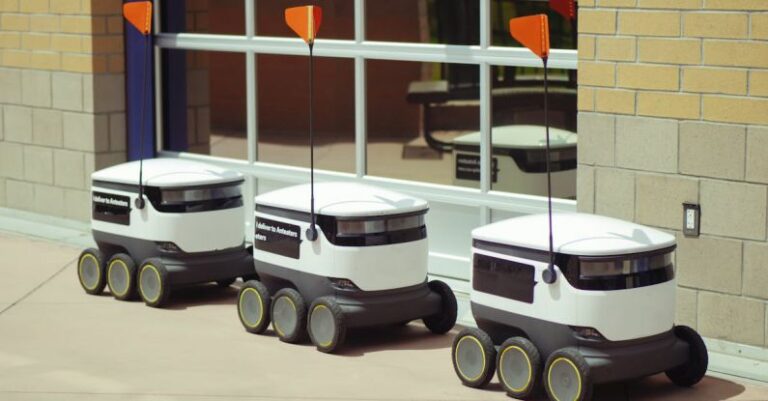
Advancements in Robotics: Cutting-edge Sensors for RC Robots
Robots have come a long way from being mere machines to becoming intelligent and autonomous entities, thanks to the integration of cutting-edge sensors. In the realm of RC (remote-controlled) robots, these sensors play a vital role in enhancing their capabilities and performance. Let’s delve into the world of cutting-edge sensors for RC robots and explore how they are revolutionizing the way these robots operate.
Sensors for Navigation and Obstacle Avoidance
One of the key functionalities of sensors in RC robots is navigation and obstacle avoidance. To navigate through complex environments effectively, robots need sensors that can provide accurate data about their surroundings. LiDAR (Light Detection and Ranging) sensors have emerged as a popular choice for RC robots due to their ability to create detailed 3D maps of the environment, allowing robots to navigate with precision. By emitting laser beams and measuring the time it takes for the beam to return after hitting an object, LiDAR sensors can detect obstacles and plan optimal paths to avoid collisions.
Vision-based sensors, such as cameras and depth sensors, are also essential for RC robots to perceive their surroundings. These sensors enable robots to recognize objects, track motion, and interpret visual data in real-time. By combining vision-based sensors with advanced algorithms, RC robots can navigate complex terrains, identify objects, and interact with their environment more efficiently.
Sensor Fusion for Enhanced Perception
Sensor fusion is a technique that combines data from multiple sensors to improve the overall perception and understanding of the robot’s surroundings. By integrating data from different sensors, such as LiDAR, cameras, and ultrasonic sensors, RC robots can create a comprehensive view of the environment, reducing uncertainties and enhancing decision-making capabilities.
For example, by fusing data from LiDAR sensors for long-range obstacle detection and ultrasonic sensors for short-range proximity sensing, RC robots can navigate through dynamic environments with greater accuracy and safety. Sensor fusion allows robots to adapt to changing conditions, make informed decisions in real-time, and improve their overall performance in various tasks.
Inertial Measurement Units (IMUs) for Motion Control
IMUs are another crucial type of sensor used in RC robots for motion control and stabilization. An IMU typically consists of accelerometers, gyroscopes, and magnetometers that measure the robot’s acceleration, angular velocity, and orientation relative to the Earth’s magnetic field. By analyzing the data from IMUs, RC robots can maintain stability, adjust their orientation, and track their position accurately.
IMUs play a vital role in controlling the movement of RC robots, especially in dynamic environments or during high-speed maneuvers. By continuously monitoring the robot’s motion and orientation, IMUs help optimize control algorithms, reduce errors, and enhance the overall agility and responsiveness of the robot.
Environmental Sensors for Adaptive Behavior
Environmental sensors, such as temperature sensors, humidity sensors, and gas sensors, enable RC robots to adapt to environmental conditions and perform specific tasks effectively. For example, in agricultural applications, RC robots equipped with environmental sensors can monitor soil moisture levels, detect plant diseases, and optimize irrigation processes based on real-time data.
By integrating environmental sensors into RC robots, these robots can operate autonomously in diverse environments, adjust their behavior based on environmental cues, and optimize their performance for specific tasks. Environmental sensors enhance the adaptability and versatility of RC robots, making them more efficient and effective in various applications.
Innovations in Sensor Technology: The Future of RC Robotics
The field of sensor technology for RC robots is continually evolving, with ongoing advancements in sensor capabilities, miniaturization, and integration. Future developments in sensor technology are expected to focus on enhancing sensor accuracy, reducing power consumption, and enabling seamless integration with artificial intelligence and machine learning algorithms.
As sensor technology continues to progress, we can expect RC robots to become more intelligent, autonomous, and versatile in their capabilities. From enhanced navigation and obstacle avoidance to adaptive behavior and motion control, cutting-edge sensors are driving the next wave of innovation in RC robotics. By harnessing the power of cutting-edge sensors, RC robots are poised to revolutionize industries, transform workflows, and unlock new possibilities in the world of robotics.





